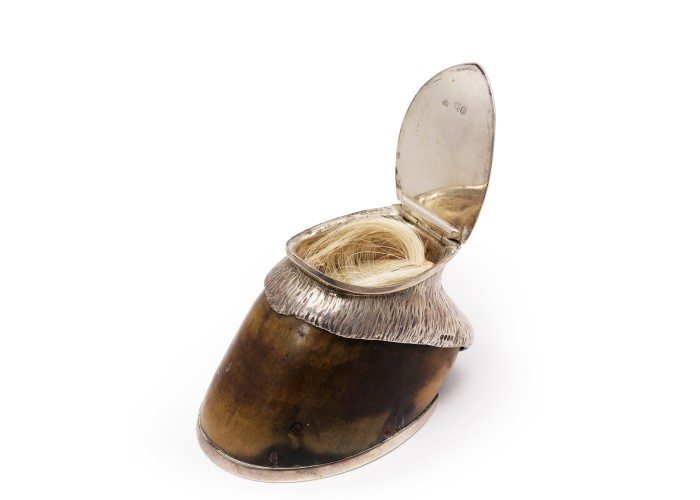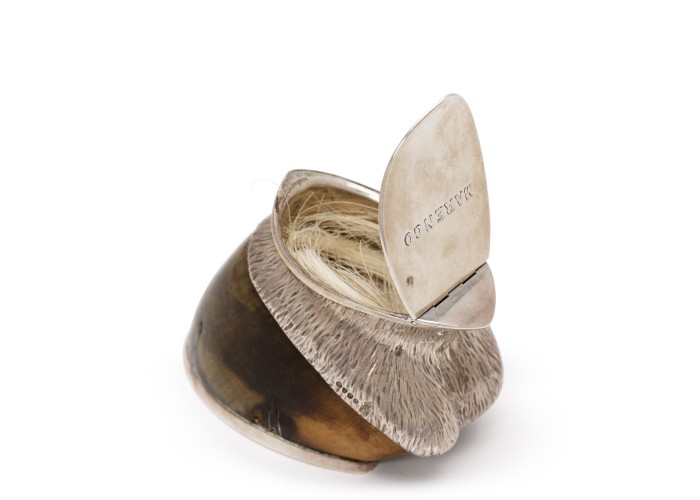Horse’s Hoof Snuff Mill
This is a snuff mill, set in silver, was made from the hoof of Marengo, one of the horses ridden by Napoleon at Waterloo. Snuff, popular in Europe from the 17th century onwards, is made from ground tobacco leaves. A pinch is inhaled into each nostril from the back of the hand. Airtight boxes to store it became a popular accessory. The snuff box now contains what are reputed to be hairs from Marengo’s tail.
It was popular in the 19th century to set important or meaningful objects in silver, for use as decoration and display. This snuff mill would have been brought out during important social occasions, showing off a prestigious relic of the Battle of Waterloo.
“Marengo” was a light grey Arab stallion, relatively small at just over 14 hands high (142cm). Napoleon acquired him from Egypt in 1799. He named him for the famous French victory over the Austrians near the village of Marengo in northern Italy on 14 June 1800. Noted for his endurance, Marengo is best celebrated for carrying his master to Moscow and back. He also carried the Emperor at Austerlitz and Jena. Marengo’s role at Waterloo is less clear. Napoleon was not mounted for much of 18 June – and Marengo would not have been harnessed to the Imperial coach.
Marengo was captured at Waterloo by William, Baron Petre. He sold him to Lieutenant-Colonel Angerstein of the 1st (Grenadier) Regiment of Foot Guards. In December 1823 Marengo went on public view at the Waterloo Rooms, 94 Pall Mall, complete with original bridle and saddle. “The Horse is so quiet”, it was reported, “that either Ladies or Children may caress him.” Entrance cost one shilling (12p), but children and servants could enter at half price. All classes were impressed by the five visible wounds on his body, talk of a bullet in his tail, and the imperial crown and letter ‘N’ branded on his hind quarters.
Marengo died in 1831, aged about 36. His skeleton, minus two hooves (the other was also taken as a memento), can be seen today at the National Army Museum.
-
Curatorial info
- Originating Museum: Household Cavalry Museum
- Accession Number: N/A
- Material: Silver, horse hair, hoof
-
Use this image
You can download and use the high resolution image under a Creative Commons licence, for all non-commercial purposes, provided you attribute the copyright holder.
- Rights Holder: Private collection.
- License Type: Creative Commons
Private Collection
Some objects - such as this one - are owned by private collectors. Waterloo 200 cannot give information on the ownership or location of these items.










